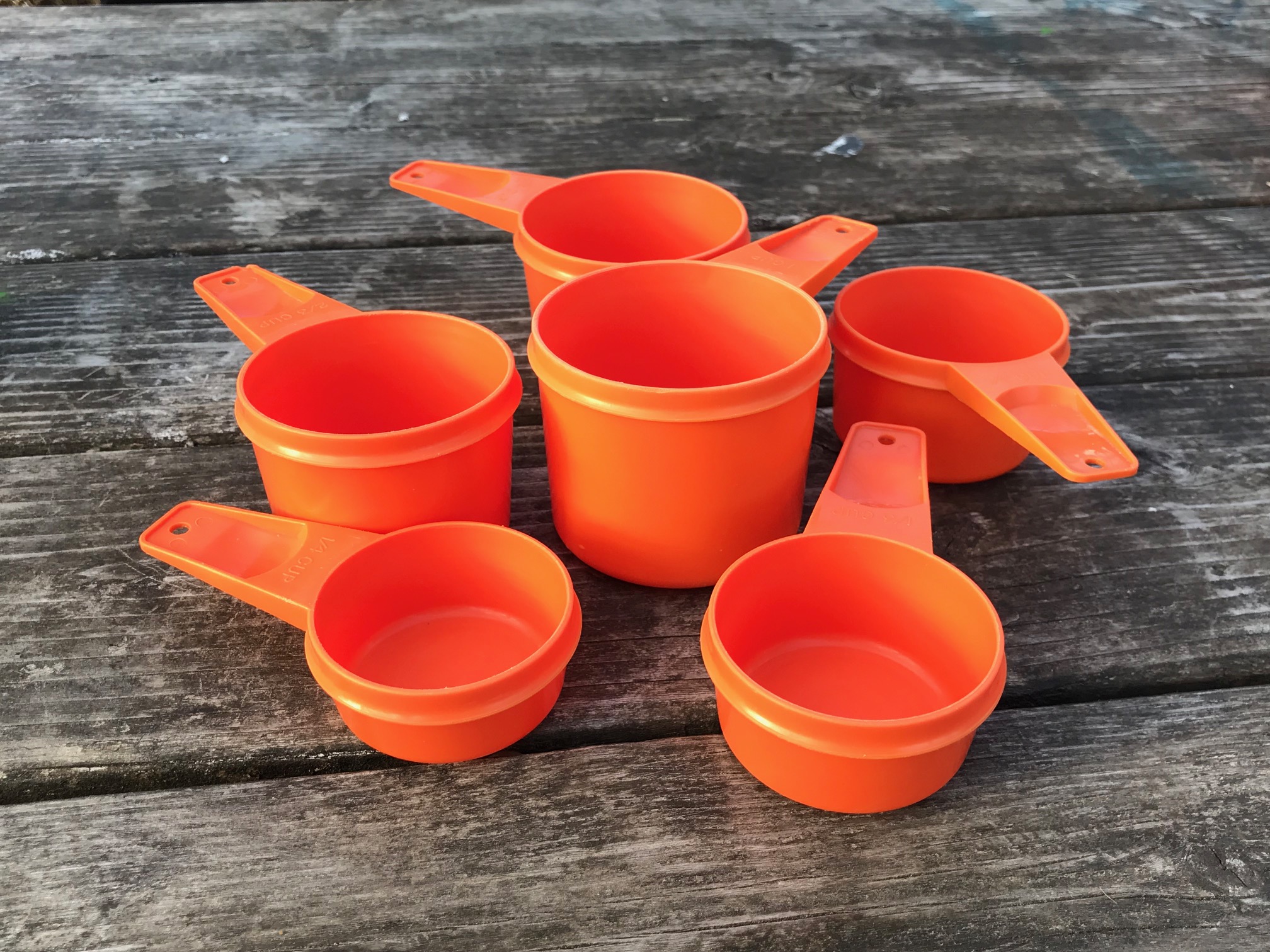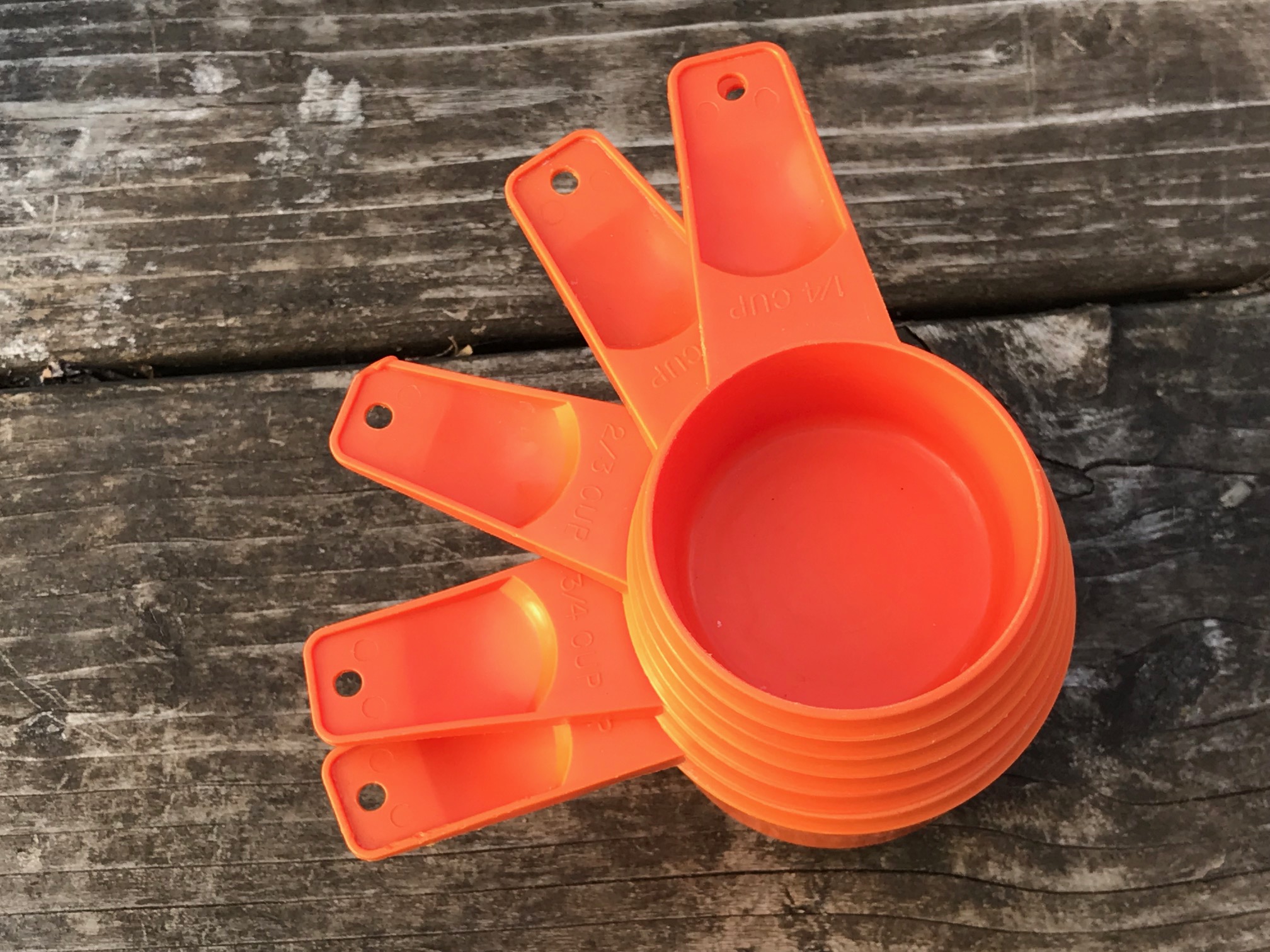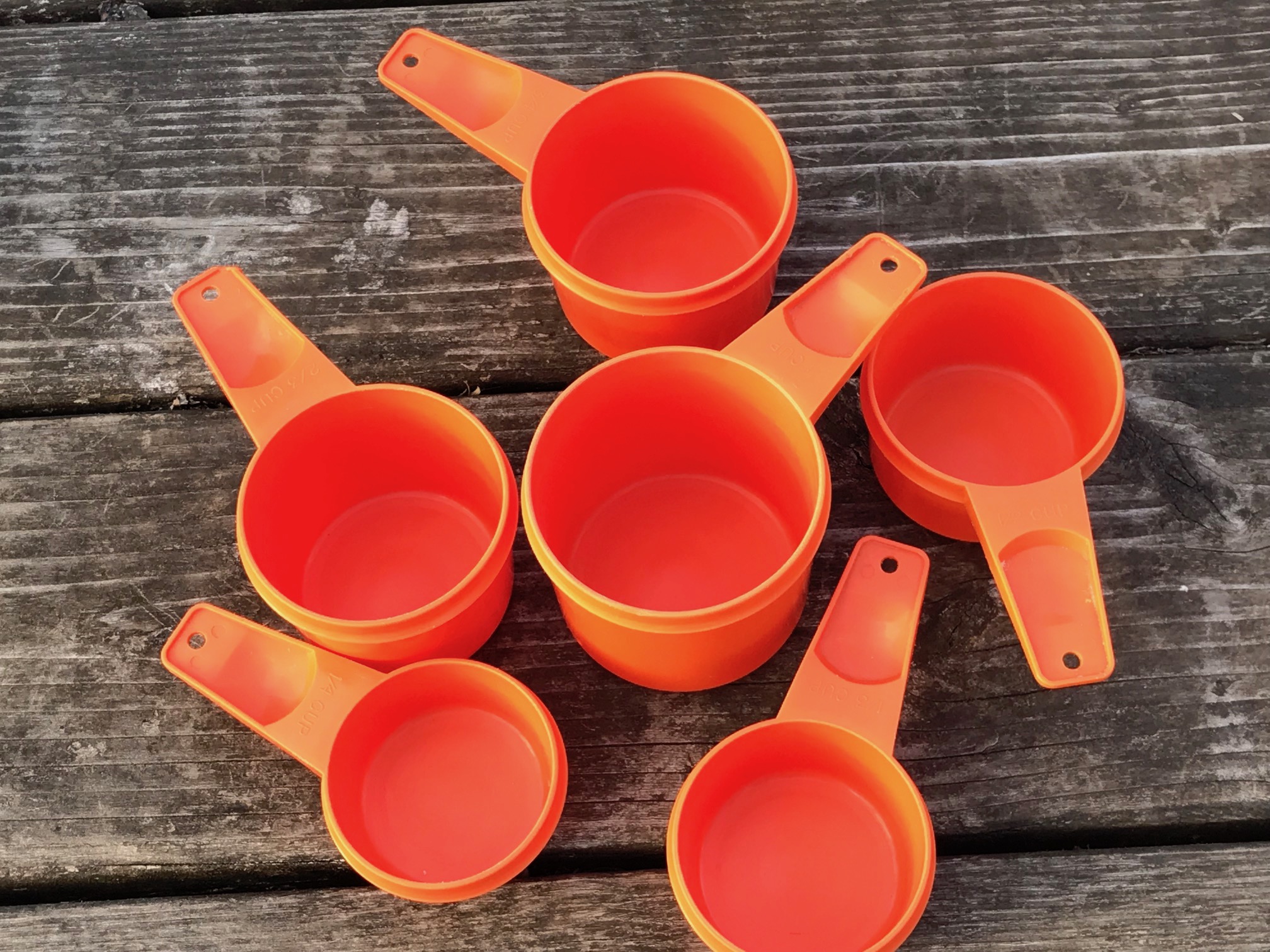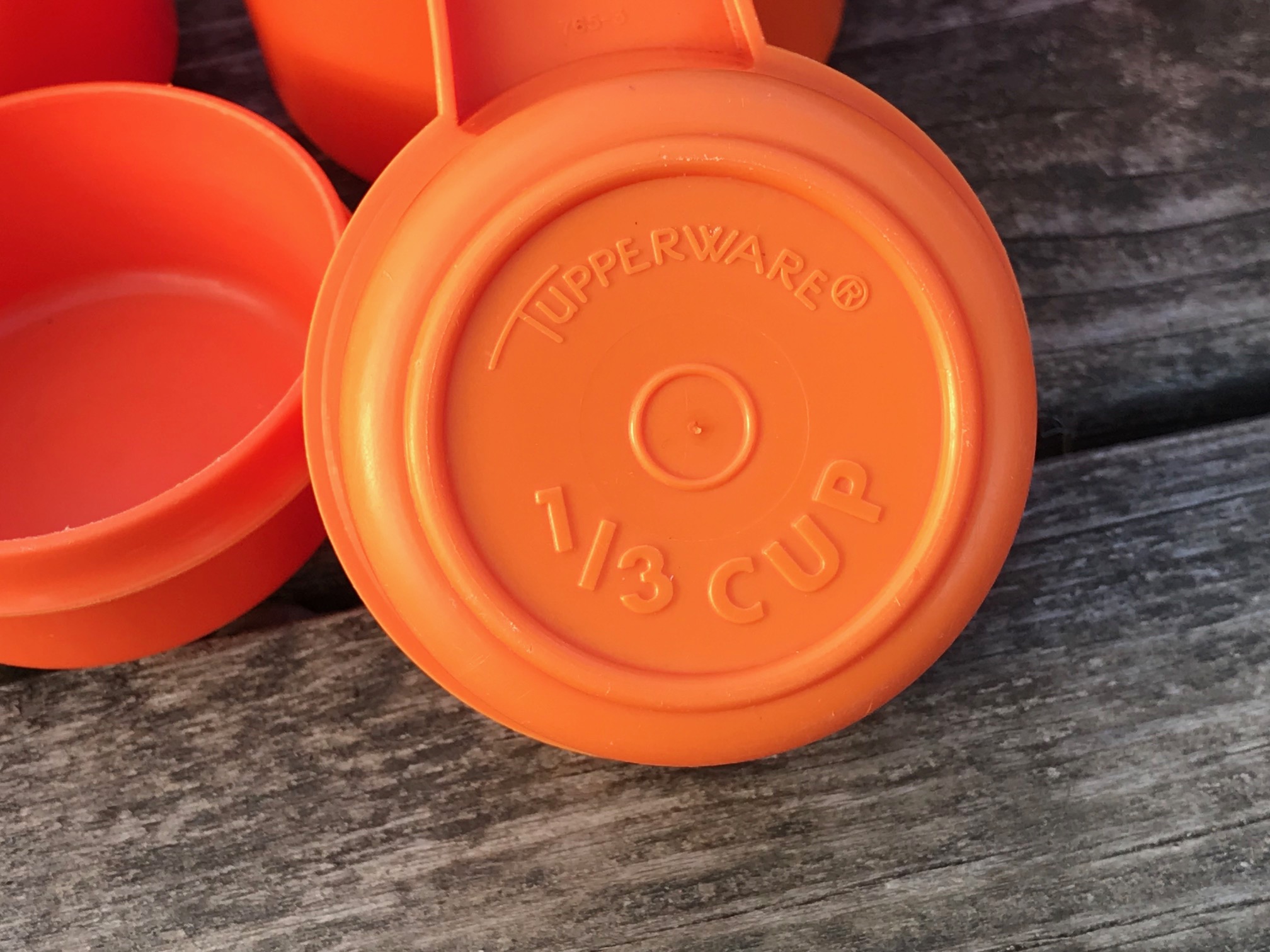Orange Tupperware Vintage Measuring Cups: 61 ppm Cadmium. Cadmium is a known carcinogen for humans.
 To see more Tupperware items I have tested, click here.
To see more Tupperware items I have tested, click here.
When using an XRF instrument to test these plastic measuring cups (which are made of solid orange plastic with no painted markings or decorations) they had the following readings:
- Cadmium (Cd): 61 +/- 7 ppm
- Barium (Ba): 138 +/- 71 ppm
- Zinc (Zn): 394 +/- 12 ppm
- Copper (Cu): 17 +/- 8 ppm
- Nickel (Ni): 10 +/- 5 ppm
- Titanium (Ti): 1,615 +/- 191 ppm
All test results reported on this blog are replicable and accurate. The test result set above was for a test of this item for a full 60 seconds (one minute) in “Consumer Goods” mode. If a metal is not listed above, it was not detected by the XRF instrument in this mode.
This is a relatively low level of Cadmium compared to some of the other vintage orange Tupperware pieces I have tested. You can see all of those by clicking here.
A word of caution, given it is nearly impossible to tell the exact year of manufacture of a Tupperware product (because they appear to not be marked in any way that would indicate the exact year of manufacture), the fact that this orange cup set is negative for Lead, Mercury and Arsenic (and only positive for a relatively low level of Cadmium compared to other similar vintage orange pieces) does not mean that other orange Tupperware items will also be negative. You can read more about this here.
Outside of the concern for the presence of heavy metal toxicants, it is my understanding that all vintage Tupperware (pre-2010) does test positive for BPA (a substance which is not detectable with an XRF instrument). As a result, just because a vintage Tupperware item is negative (or low) for toxic heavy metals does not mean it should definitely be considered safe for food-use purposes.
If you have any information that could help date this particular item, that would be very much appreciated. So far I have this 1982 Tupperware catalog that helps give some context for some of the pieces and colors – link. Thank you for supporting this work in this way (by providing information that is helpful to others!)
If you appreciate this work and would like to see more test results like this, please consider contributing to the GoFundMe for my advocacy work: http://www.GoFundMe.com/LeadSafeMama. I do “take requests” as I live near quite a few antique stores and could easily go purchase something that you might want tested if the cost of the item were covered and a contribution that also helped with the cost of testing was made. Please e-mail me if you are interested in having me purchase something specific to test: TamaraRubin@mac.com
To learn more about participating in the regular (non-Tupperware related!) consumer goods testing I do with the support of my readers, please click this link.
As always, thank you for reading and for sharing my posts.
Please let me know if you have any questions.
Tamara Rubin
#LeadSafeMama
Click here for the overview post showing all Tupperware tested so far.


Never Miss an Important Article Again!
Join our Email List




Thankyou so much for this! Ive been using my grandmas orange set for baking… And have even let my son play with them… My gosh this is scary. I will be disposing of them today.
Hi Rebecca!
Thank you for commenting with a positive and constructive comment! 🙂
Tamara
So at what level are they dangerous?
And how do we safely dispose of them?
I regularly use these measuring cups. I have the avocado colour and the plain clearish colour. How do these colours perform? I’d be interested to know the toxin levels please.
Hi Marie!
The plain / clear ones have been negative for toxicants, but I understand that if they were made before 2010 they likely have unsafe levels of BPA. I haven’t tested the green ones, although here is a green bowl I tested – check out the pictures with and without flash, I am pretty sure this is the avocado green (even though the flash pictures make it look brighter): https://tamararubin.com/2019/03/vintage-tupperware-green-bowl-2780-ppm-lead-234-ppm-arsenic-both-metals-are-poisonous-to-humans/
Tamara
Even though you haven’t tested the gold measuring cups from the 70’s, am I right to assume they are unsafe?
Orange Tupperware was big in 1979
Hi Sussan! Thank you for commenting!
– Tamara
I have orange, green, brown, white, and yellow drinking cups as well as orange measuring cups, measuring spoons, and small storage containers. I also use the saltine cracker containers to store flour and sugar. I suppose I should be concerned.
I have these orange measuring cups and the matching measuring spoons that I have been using since I bought them in 1986 or 1987!
Well… I just used those yesterday. Thank you for doing what you do to help people stay safe! I certainly had no idea any of this was a thing!
Thank you so much for your information! I have Tupperware that is a deeper orange rust color, containers for food, from 1979 through the early 80s. I have one bed by eight with a split in the corner, one 8 x 12, and one marinating meat container roughly an 8 x 10.I have the orange measuring cups and the green measuring spoons. If you would like me to send anything to you for testing. I will. I also have a large cake container with a handle and a light gold top. Some are used for food storage, but I always line the bottom and cover the top before I seal it